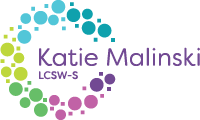The February 2008 issue of the Journal of the American Academy of Pediatrics has an article in it that I found to be practically earth-shaking. The journal’s editors and the article’s author, Alison Schonwald, MD, FAAP, review a very recent British study that looked for possible links between hyperactivity and food preservatives and/or artificial colorings. And the short answer is-they found it.
This study, which is described by the AAP editors as “a carefully conducted study in which the investigators went to great lengths to eliminate bias and to rigorously measure outcomes” concludes that there is a connection between hyperactive behavior and food preservatives (particularly sodium benzoate) and artificial food colorings.
Just to repeat myself a third time-this reliable, peer-reviewed, double-blind etc etc etc study found a connection between some of the foods that our kids eat (the junky, chemical-laden ones) and hyperactive behaviors. Wow.
Of course, this isn’t news to some. Parents have anecdotally found this link themselves over the years. It’s just that this is the long-awaited “scientific study” that ‘proves’ it.
Another interesting note in the AAP article-they state that they were skeptical in the past and now acknowledge that they were wrong.
Did you feel that tremor? ;^)
If you’d like to read the AAP article, or the full text of the original British study, they can be found here: http://www.feingold.org/aap.html
Please note that I have no connection with this website nor the association behind it. (But I do think their ideas are very interesting!)
Update: Here is a link to another article describing a food-ADHD connection.
Update #2: Here are the food colorings that were connected:
• Tartrazine (E102): Yellow food coloring
• Quinoline yellow (E104): Yellow Food coloring
• Sunset yellow (E110): Orange yellow coloring
• Carmoisine (E122): Red food coloring
• Ponceau 4R (E124): Red food coloring
• Allura red (E129): Red food coloring
• Sodium benzoate (E211): Artificial preservative
